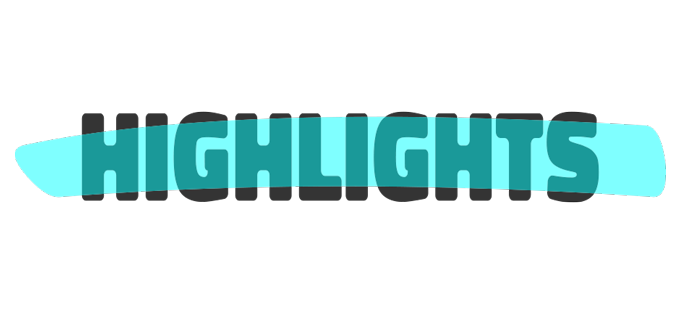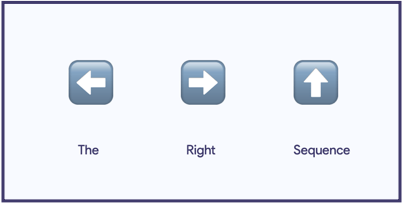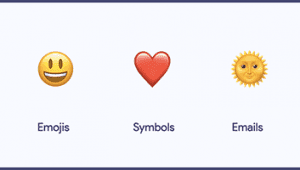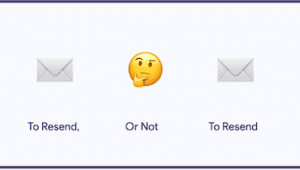6 Key SaaS Email Sequences to Convert, Engage & Retain Users
⬅️
The
➡️
Right
⬆️
Sequence
The happy path in SaaS is pretty consistent from one business to the next:
Users signup. They go through product value discovery. They’re either convinced of the value of the product, or not. If they are, they upgrade, they’re retained, and hopefully, recommend the product. If they’re not, they cancel their subscriptions and move on to find a product that best meets their needs.
Now, whether your business is B2B or B2C, you’re the one creating the user account or users are, they pay before using the product, after a trial, or they upgrade on their own terms via a freemium model, there will be a few important milestones you want to track:
- Signup: the initial account creation;
- Activation: the Aha moment when the user or customer perceives the product as valuable;
- Conversion: when the user agrees to swipe his/her credit card and purchase the product;
- Re-Purchase or Retention: when the customer willingly pays for a second/third/fourth/… month or year of subscription;
- Referral: when a user or customer agrees to refer your product to another prospect.
Your role as a SaaS marketer is to help speed up transition from one milestone to the next.
Your email marketing platform will be one of your greatest assets for this.
Email is one of the best channels to help build relationships, bring users back into your product, and influence behaviors.
Because of the different milestones, you’ll need different email sequences which, in turn, will need different tones, targeting, and emails.
Let’s look at the 6 key email sequences your SaaS business needs, and how to handle those sequences specifically:
1. Lead Nurturing Email Sequences
Do you capture email addresses prior to signup?
Maybe you have a newsletter, a pre-launch list, or you’re using conversational marketing to capture and qualify sales leads.
If you do, the goal of your first sequence will be to convince these subscribers of the value of your product and build up their desire to signup for your product.
For this sequence, you have to strike a balance between what your subscribers actually signed up for (content updates, a demo, other) and product promotion.
The tone for this sequence will be laid back and casual; you can’t be overly-pushy here.
Key emails will be your email sequence’s welcome email and your (eventual) ask to signup to try and use your product.
This sequence can be viewed more as a nurturing sequence, building product value over time.
Here’s how we approach the welcome email at Highlights:

Note how the email begins establishing product value ( 1) content analysis, 2) figuring out what really works). ☝️
2. Onboarding Email Sequences
From Signup or Account Creation to Activation, your goal will be to establish product value and get users to their desired outcomes; what they’re trying to achieve with your product.
We already wrote an extensive guide on SaaS onboarding emails explaining how onboarding has a disproportionate impact on retention and trial conversions.
For onboarding emails, the tone should often be more informational and matter-of-fact. At this stage, things are going well (happy path!), users are in the process of discovering the product at their own paces.
Onboarding emails are about product discovery, overcoming objections, and getting users back in the product, so that they can experience the product value (see how MailChimp does it).
Key emails will be your product’s welcome email and the first few onboarding emails.
Not only will these emails get opened more than any others (novelty!), they’ll help ride out initial signup momentum.
Chances are that if users delay in getting started with the product, they won’t get around to using it. Ever… ?
Because of this, you’ll also need to plan for the users that don’t activate.
No matter how great your product is, it is very likely that 40-60% of your free trial users never see the product a second time.– Samuel Hulick, The Elements of User Onboarding Author
3. Upgrade or Conversion Email Sequences
Now, whether your product is freemium or has a free trial, it’s a good idea to try to upgrade users. Many SaaS businesses actually don’t do this and it hurts their conversion rates. Some users will actually upgrade just because you ask.
Your key email for this sequence will be the upgrade email. This email can be a bit more pushy or salesy to help close the sale.
The goal here is to confirm that they value your product, remind them of the value they’re getting out of it, and capitalize on activation momentum (if they did activate).
This sequence doesn’t have to end at the upgrade email. If users don’t convert and elect to stay on a free plan, you can use email to provide more reasons to upgrade via value expansion emails:
‘Our product also does X!’ ‘It can be useful for Y!’
If rebuilding the perceived value of the product works out, it’s often a good idea to try another upsell, coming at it from a different angle.
What’s Your Website’s Traffic Score?
Find out how well your site traffic performs against your competitors with a free audit.
4. Retention Email Sequences
When users convert, they become subscribers. To make sure that they agree to remain subscribers and re-purchase your SaaS product month-to-month or year-to-year, you’ll definitely want to remind them of the value they’re receiving from their subscription.
Your retention email sequence can technically last forever.
Because of this, it needs a different tone and strategy; you’re dealing with your VIPs, the people paying the bills for your business.
Although the goal of the sequence can vary depending on your business objectives (pure retention, expansion revenue, referral, feature discovery, etc), the key goal for this email sequence will always be retention and re-purchase.
No retention = No subscribers
You can influence re-purchase by showcasing more or new value in the product, or by reminding subscribers of the value they’re already getting from their subscriptions.
TextExpander, does this very effectively. Each month, they tell me how much time I’ve saved using their product:

Depending how much I value my time ($$), saving 57 minutes per month definitely tells me that the $20 per year I pay for their product is money well spent.
Alternatively, you can also increase retention by bumping monthly subscribers to yearly subscriptions.
If your subscribers are engaged and are getting value out of your product, this can be a no-brainer.
Podia, the platform I use for the SaaS Email Masterclass, does this very well:

This email doesn’t need to do hard sell. It simply tells users how much money a yearly subscription will save them and reduces friction by telling them how easy it is to change their plan.
Bumping monthly subscribers to yearly plans gives you money upfront and increases customer lifetime duration. It’s all good. ?
5. Expansion Email Sequences
Negative churn is the Holy Grail of SaaS. If you can grow your business without signing any new customers you are untouchable.– David Cummings, Serial Entrepreneur
In SaaS, any revenue generated in excess of the initial subscription sales price is considered expansion revenue.
Expansion revenue can compensate for churned subscriptions, which can lead to negative churn, when new revenue from existing subscribers exceeds loss subscription revenue.
Depending on your subscription’s value metrics – pricing dimension or pricing axis – email can help you grow expansion revenue.
A good way to do this is to look at your subscribers’ consumption.
When a subscriber’s consumption is within 20% of maxing out a key value metric (user seats, feature usage, transaction amount, etc), you can send an email with an offer to upgrade to a more appropriate plan or billing cycle:
Zapier leverages this strategy very effectively:

You can offer a discount to help smooth out the transition.
If a subscriber can anticipate greater needs for your product in their organization, they’ll be tempted to upgrade in anticipation.
This can help simplify their work and maybe save them a little bit of money.
6. Referral Email Sequences
Lastly, your referral email sequence will probably get sent in parallel of other email sequences.
To successfully get referrals, you’ll want to run a Net Promoter Score survey; a standardized survey designed to help assess how likely users or subscribers are to recommend your product.
Based on the scores (0 to 10), you’ll be able to discover which of your users are Promoters, Passives, or Detractors.
Asking Promoters (Scores of 9 and 10) to review your business, refer your product, or join an affiliate program can help fuel fresh acquisition for your business.
Since you’ll be contacting your fans, your emails’ tone will need to be more casual and appreciative.
Key emails will be your NPS Survey email and the followup ask for your Promoters.
If some of your freemium users show signs of engagement, you can also ask them for referrals. This can be a good way to extract more value out of your free tier.
What About The Other Email Sequences?
Although you’ll probably end up expanding your email program past these 6 sequences with… reactivation, feedback, or nurturing email sequences, the above sequences are the foundations of your SaaS email program.
Start with these sequences and emails, evaluate the added impact of the sequences, and expand from there.
In the SaaS Email Masterclass we’ll look at prioritization within (and among) email sequences. We’ll also dive deeper in the creation of the email series.





Trackbacks & Pingbacks
[…] Source link […]
Leave a Reply
Want to join the discussion?Feel free to contribute!